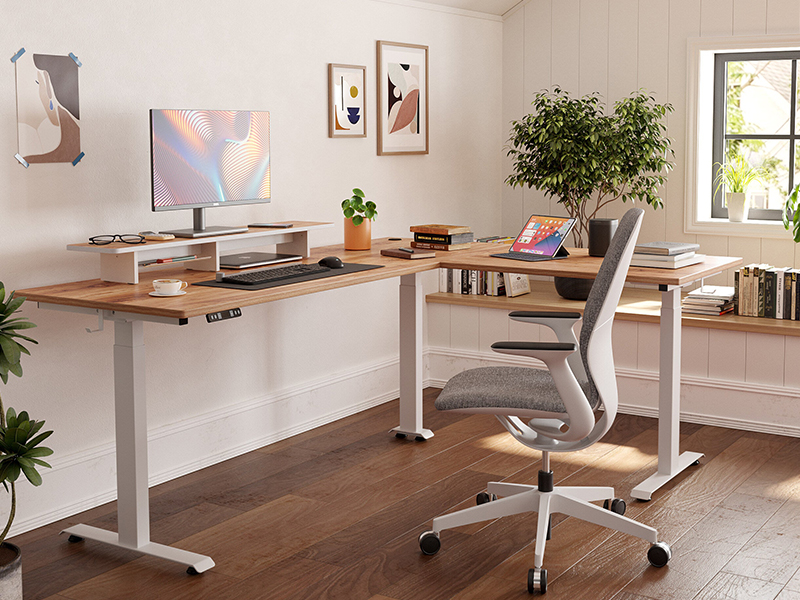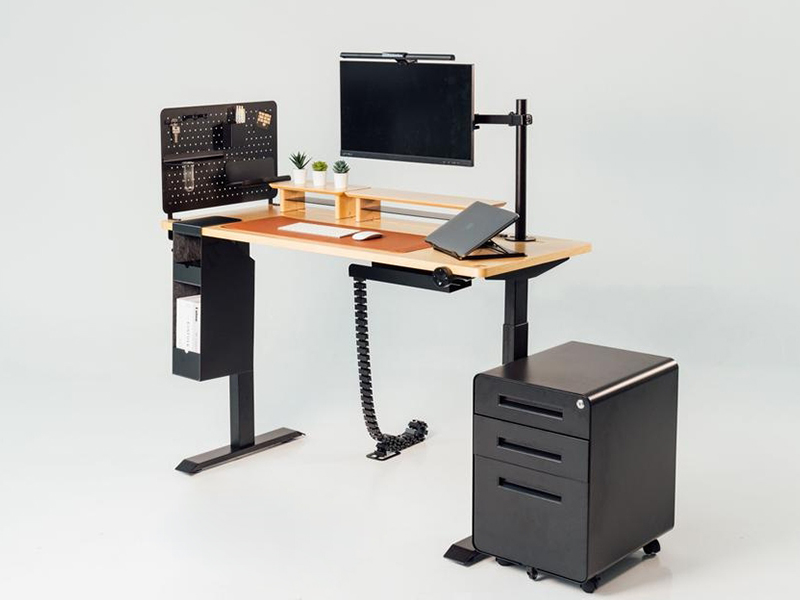Feng Shui is an ancient Chinese practice that involves arranging your environment to promote harmony, balance, and positive energy flow. Applying Feng Shui principles to your office desk and work setup can enhance your productivity, creativity, and overall well-being. Here’s how to Feng Shui your office desk and work setup:
1. Desk Placement
- Command Position: Place your desk in the “command position” where you can see the entrance to the room without being directly in line with the door. This position symbolizes control and readiness.
- Solid Wall: Ideally, have a solid wall behind you to provide support and stability. Avoid having your back to the door or large windows, as it can create feelings of vulnerability.
2. Desk Organization
- Declutter: Keep your desk clean and clutter-free to allow positive energy (Chi) to flow freely. Only keep essential items on your desk.
- Five-Element Colors: Incorporate the five elements (wood, fire, earth, metal, and water) through colors and objects to balance energy:
- Wood: Green, plants, wooden items.
- Fire: Red, orange, lighting, candles.
- Earth: Yellow, brown, crystals, stones.
- Metal: White, gray, metal objects.
- Water: Blue, black, water features, mirrors.
3. Desk Layout

- Left Side (Knowledge and Growth): Place items related to learning and growth, such as books, notepads, or a computer.
- Center (Health and Balance): Keep this area clear to promote a sense of calm and focus. A small plant or a crystal can be placed here.
- Right Side (Relationships and Creativity): Position items that inspire creativity and collaboration, such as a photo of loved ones, a creative project, or decorative items.
4. Personalization
- Inspiring Items: Decorate your desk with items that inspire and motivate you, such as personal photos, awards, or art.
- Affirmations and Quotes: Display positive affirmations or motivational quotes to keep your mindset positive.
5. Plants and Nature
- Plants: Introduce plants to your desk to bring in the wood element and enhance the air quality. Good options include jade plants, bamboo, or succulents.
- Natural Light: Maximize natural light to boost your mood and energy levels. If natural light is limited, use a full-spectrum lamp to mimic daylight.
6. Balance and Symmetry
- Symmetrical Arrangement: Create a balanced and symmetrical desk layout to promote harmony. This can include matching items on both sides of your desk or arranging items in pairs.
- Yin and Yang: Balance the Yin (passive) and Yang (active) energies by combining soft, nurturing items (Yin) with dynamic, energetic items (Yang).
7. Energy Flow
- Unobstructed Pathways: Ensure that the area around your desk is free from obstacles to allow for the smooth flow of energy.
- Cleanliness: Regularly clean your desk and surrounding area to maintain a fresh and vibrant workspace.
8. Electronic Management
- Limit Electronics: Minimize the number of electronic devices on your desk to reduce electromagnetic interference and clutter.
- Cable Management: Use cable organizers to keep cords neat and tidy, preventing chaotic energy.
9. Color and Elements

- Color Choices: Use colors that align with your goals and the type of energy you want to attract. For instance, blue and green can enhance calm and creativity, while red can boost energy and motivation.
- Element Balance: Incorporate elements that represent the five Feng Shui elements to create a balanced and harmonious workspace.
10. Crystals and Symbols
- Crystals: Use crystals like clear quartz for clarity, amethyst for focus, or citrine for abundance. Place them strategically on your desk.
- Symbols: Incorporate symbols that resonate with you, such as a Buddha statue for peace, a wealth bowl for prosperity, or a dragon for protection and power.
Conclusion
By applying these Feng Shui principles to your office desk and work setup, you can create an environment that promotes balance, positivity, and productivity. A harmonious workspace not only enhances your well-being but also supports your professional growth and success.




